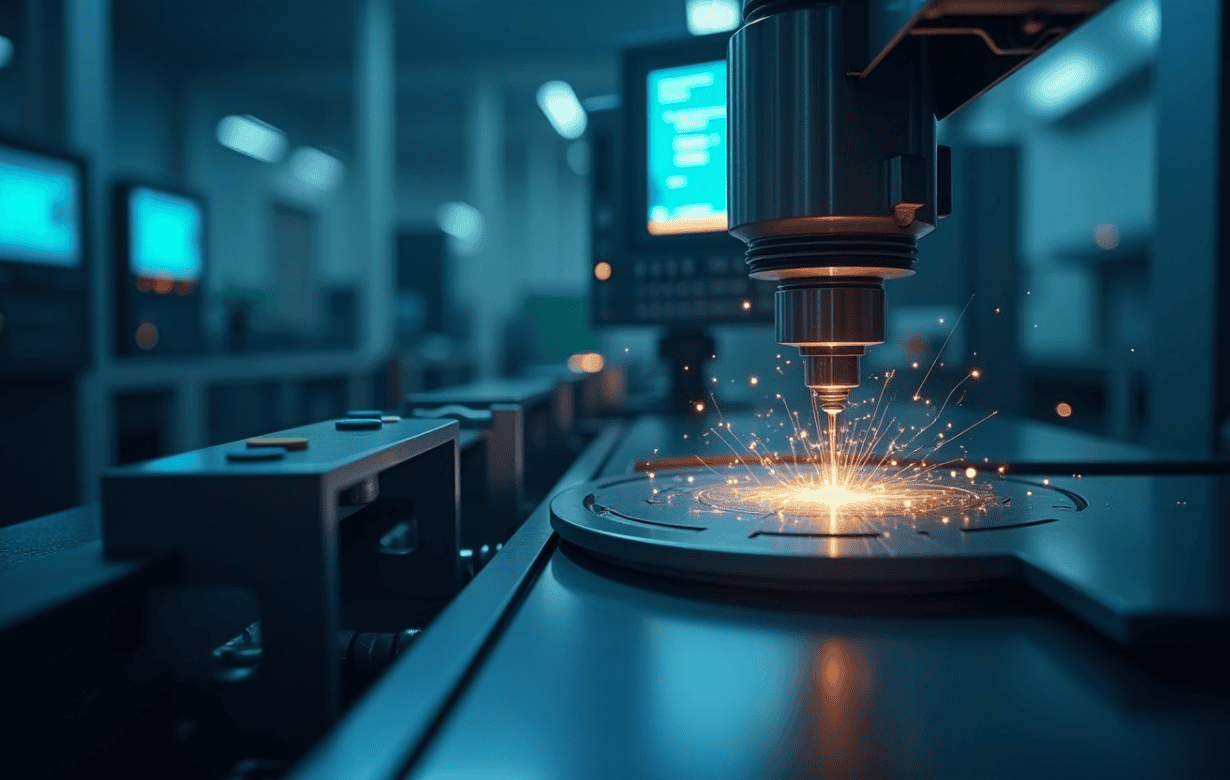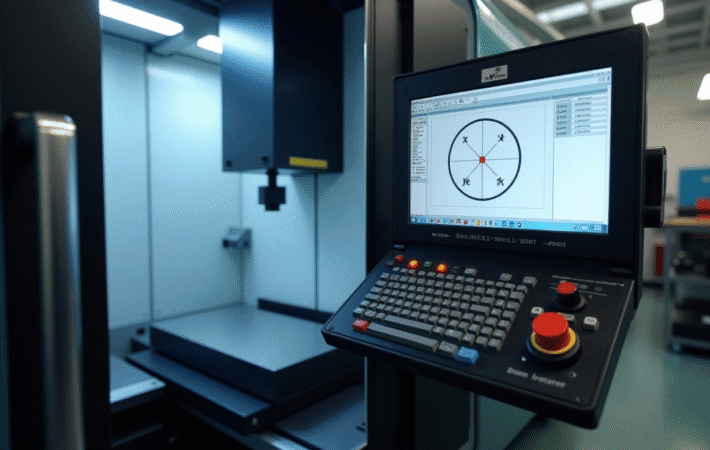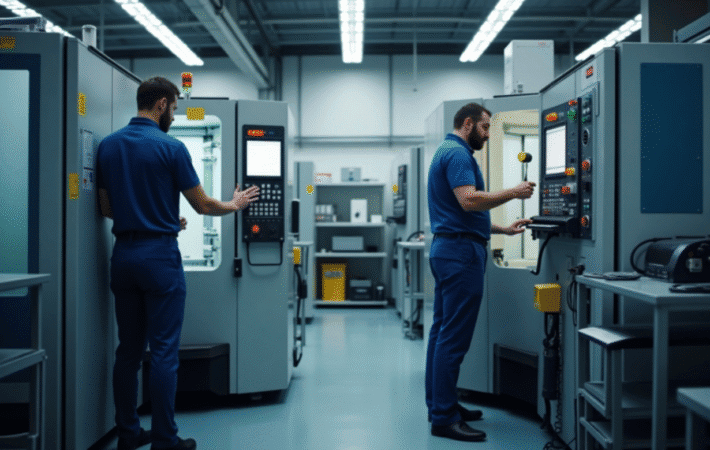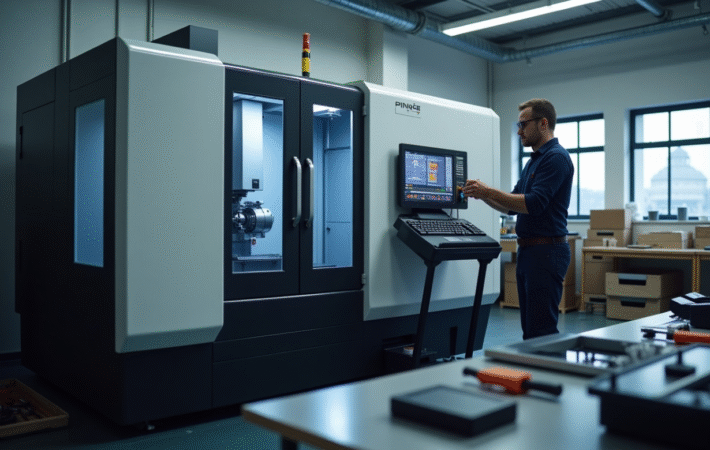How does G-code differ from M-code?
In the world of CNC machines, programming codes are one of the most important pillars. The codes are used for directing the CNC machines and their tools to do the specific works of milling, drilling, and other machining works too. Two of the most fundamental codes that are used for CNC programming are G-code and M-Code. They both are very important to complete the CNC machining works in the perfect order but both of them serve very distinct purposes. If you are also someone who is trying to operate a CNC machine then you need to know their purposes in the right way and their differences too. In this blog, we will be discussing their differences in detail.
What is G-Code?
G-code is also known as “Geometric Code” or “General Code”. This code is all about motion and positioning. It helps in controlling the movement of the machine, which includes motions like linear interpolation, circular interpolation, and drilling. Also, it helps in telling about where to go, how fast to go, and what path to follow.
Core functions of the G-Code
Here are some of the main works that are done by G-Code:
- Tool Movement: G-Code commands instruct the tool to move along some specific paths such as straight lines, circular motions, arcs, or complex curves.
- Feed rates: Every machining work needs a particular feed rate to complete the work in an optimal way and that is done with the help of G-Code.
- Coordinate systems: Reference points and coordinated planes are very important for perfect machining and that is established using G-Code.
Example of common G-Code Command
Here’s a list of the top G-Code Commands that are used for different CNC machining works:
- G00: Used for rapid positioning (move quickly to a location without cutting).
- G01: This helps in linear interpolation (moving in a straight line at a set speed).
- G02/G03: This one is used for circular interpolation (move in a clockwise or counterclockwise arc).
- G17: Helps in selecting the XY plane for machining.
What is M-Code?
M-code is also known as “Miscellaneous code” or “Machine Code”, and this programming language is used to control the auxiliary functions of the CNC machine. The commands of the M-Code control everything in the machine except the direct movement of the cutting tool. It helps with things like coolant control, spindle control, and tool changes.
Core functions of the M-Code
Here are some of the main functions of the M-Code for CNC machining –
- Spindle control: The M-code helps in controlling the start and stop of the spindles of CNC machines.
- Coolant activation: You can use M-Code to turn the coolant flow off and on, to manage the heat during machining.
- Tool changes: It commands the machine to change the tools automatically as per the machining needs.
- Program control: The M-Code also helps in starting, pausing, or stopping the CNC program.
Example of common M-Code command
Here’s a list of some of the most common M-Code commands:
- M03: Helps in starting spindle (clockwise rotation)
- M05: Used to stop spindle
- M08: It is used for turning coolant on
- M09: It helps in turning coolant off
- M30: Can assist to end the program and rewind
Key differences between G-Code and M-Code
Here’s a right depiction of the main differences between the G-Code and the M-Code:
| Criteria | G-Code | M-Code |
| Purpose | Controls tool movement and machining operations | Manages auxiliary and machine-specific functions |
| Instruction Type | Geometric commands for toolpaths and speeds | Miscellaneous commands for machine setup/actions |
| Standardization | More standardized across machines and industries | Varies significantly between manufacturers |
| Role in Workflow | Primary: defines machining processes | Secondary: supports machine operations |
| Impact on Precision | Directly affects machining accuracy | Indirectly supports precision (e.g., coolant) |
| Complexity | More complex, with detailed geometric calculations | Simpler, but can be machine-specific |
| Frequency of Use | Used more frequently throughout CNC programs | Used intermittently for setup/support tasks |
| Flexibility | Highly versatile and widely applicable | Less flexible, often machine-specific |
How do G-code and M-code work together?
It is evident that G-codes and M-codes are not interchangeable; however, they are used in the same program to complement each other, enabling the machine to complete the entire program most efficiently. A typical CNC program consists of a series of G-codes and M-codes, which are executed in a specific order.
Here’s a sample program for CNC drilling operations:
- N10 G90 G21 G17 G40 G80 (Absolute programming, metric units, XY plane, cancel comp, cancel canned cycle
- N20 G00 X100 Y50 Z10 (Rapid traverse to starting position)
- N30 M06 T01 (Tool change to tool number 1)
- N40 G43 H01 Z2.0 (Tool length compensation, tool height offset 1, move Z to 2.0mm above part)
- N50 S1500 M03 (Spindle on, 1500 RPM clockwise)
- N60 M08 (Coolant on)
- N70 G99 G81 Z-10.0 R2.0 F100 (Drill canned cycle: drill to Z-10.0, retract to R2.0, feed rate 100mm/min)
- N80 X150 Y50 (Drill second hole)
- N90 G80 (Cancel drill canned cycle)
- N100 G00 Z100 (Rapid traverse Z to safe height)
- N110 M09 (Coolant off)
- N120 M05 (Spindle off)
- N130 M30 (Program end and rewind)
Conclusion
Both G-codes and M-codes are very important for a perfect machining process and it can never be completed if one of these codes is not written in the right way. They help to operate the machine in different ways but are equally important and an operator needs to write both of these codes in the right way.
If you are someone who is planning to buy used CNC machines, then you can check our collection at MachineStation. If you can’t find the right fit there, then let us know your requirements in the Machinery Locator and we will try to help you out.






